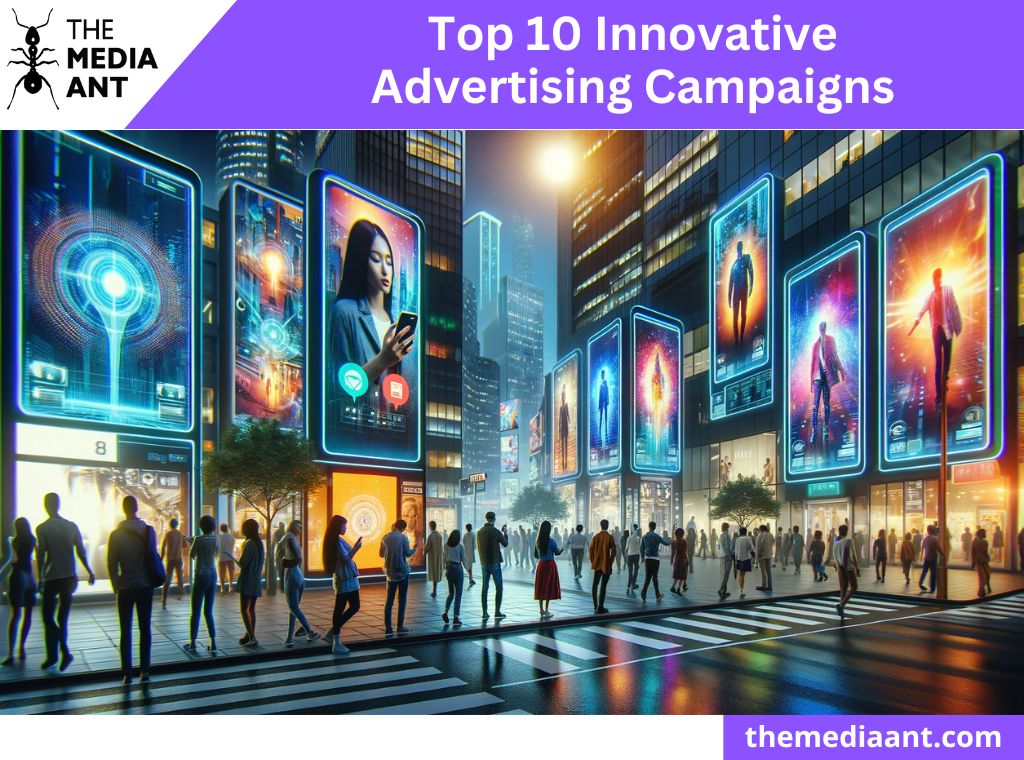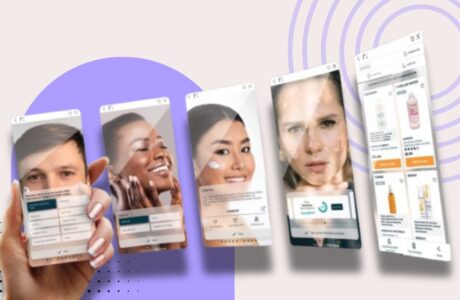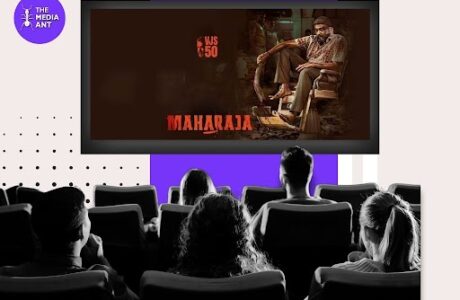In the dynamic world of entertainment, advertising campaigns play a crucial role in capturing the imagination and attention of audiences worldwide. From groundbreaking television commercials to innovative social media strategies, these campaigns have not only promoted products and services but have also shaped cultural trends and influenced public perception. In this exploration, we highlight 10 of the most remarkable and effective advertising campaigns in the media and entertainment industry. These campaigns stand out for their creativity, impact, and the way they have resonated with audiences, setting new benchmarks in advertising excellence
Dove’s “Real Beauty” Campaign (2004-present):
Dove’s “Real Beauty” campaign, launched in 2004, marked a paradigm shift in beauty advertising. Eschewing traditional beauty norms, it showcased real women with diverse body types, ages, and ethnicities, challenging the narrow, often unattainable standards set by the beauty industry. This initiative sought to empower women by celebrating natural beauty and promoting body positivity. Its inclusive approach struck a chord worldwide, sparking conversations about self-esteem and the unrealistic portrayal of women in media. By advocating for authenticity and self-acceptance, Dove not only redefined beauty advertising but also created a platform for social change, making a lasting impact on the industry and society.
Old Spice’s “The Man Your Man Could Smell Like” Campaign (2010):
Old Spice’s “The Man Your Man Could Smell Like” campaign, launched in 2010, marked a significant shift in the brand’s image. Featuring actor Isaiah Mustafa, the commercials were a blend of humor and surrealism, with Mustafa delivering fast-paced monologues in absurd, ever-changing settings. This approach humorously suggested that using Old Spice could transform an ordinary man into the epitome of charisma and allure. Notably, the campaign targeted women, who often make household purchasing decisions, while also appealing to a younger, male audience. The ads became viral sensations, revitalizing Old Spice’s appeal and setting a new standard in advertising creativity.
Snickers’ “You’re Not You When You’re Hungry” Campaign (2010-present):
Snickers’ “You’re Not You When You’re Hungry” campaign, launched in 2010, ingeniously connects hunger with altered personality traits. It humorously depicts individuals acting uncharacteristically, often as celebrities or other distinct personas, due to their hunger. Upon eating a Snickers bar, they revert to their normal selves, underscoring the tagline. This approach not only adds humor but also establishes Snickers as a quick solution to hunger. The campaign’s success lies in its relatable premise and memorable execution, making it a pop culture reference. It effectively differentiates Snickers in the competitive snack market, boosting its brand recognition and appeal.
Nike’s “Just Do It” Campaign (1988-present):
Nike’s “Just Do It” campaign, launched in 1988, is a masterclass in motivational branding. This iconic slogan encapsulates the spirit of determination and empowerment, urging people to overcome procrastination and self-doubt. Targeting all individuals, regardless of their athletic ability, it transcends sports, becoming a universal call to action for embracing challenges and striving for personal excellence. The campaign features a diverse array of athletes, from renowned professionals to everyday fitness enthusiasts, symbolizing perseverance and resilience. Its enduring appeal lies in its simplicity and relatability, making it one of the most influential and recognizable taglines in advertising history.
Apple’s “Think Different” Campaign (1997-2002):
Apple’s “Think Different” campaign, launched in 1997, marked a pivotal moment in the company’s history, signifying its resurgence and renewed focus on innovation. This iconic campaign celebrated the rebellious spirit and creative genius of influential figures like Albert Einstein, Martin Luther King Jr., and John Lennon, linking their groundbreaking work to Apple’s philosophy. It served as a tribute to those who changed the world through their unconventional thinking, paralleling Apple’s own mission to innovate. This campaign effectively repositioned Apple not just as a technology company, but as a symbol of creativity and nonconformity, appealing to a broad audience of forward-thinking consumers.
Volkswagen’s “Small Wonder” Campaign (2011):
Volkswagen’s “Small Wonder” campaign in 2011 effectively showcased the compact, efficient, and innovative nature of their cars, specifically targeting the needs of urban drivers. The campaign brilliantly communicated the message that smaller cars can be smart, practical, and environmentally friendly. It employed humor and relatability to appeal to consumers looking for vehicles that were not only economical but also well-suited for city living. This marketing strategy reinforced Volkswagen’s image as a brand that offers reliable and cleverly designed vehicles, catering to the modern ethos of minimalism and sustainability. It was a pivotal move in positioning Volkswagen as a leader in compact car design and technology.
Samsung’s “Hope for Korea” Campaign (2018):
Samsung’s “Hope for Korea” campaign, launched in 2018, was a powerful initiative aimed at fostering national pride and unity in South Korea. This campaign showcased Samsung’s technological innovations not merely as commercial achievements, but as pivotal contributions to the country’s progress and future. By highlighting these advancements, Samsung sought to inspire a sense of hope and resilience among the Korean people, reflecting a commitment to their homeland’s development. This campaign effectively blended corporate identity with national sentiment, positioning Samsung as a key player in shaping a brighter, more advanced future for Korea. It was a testament to the company’s dedication to societal advancement and national pride.
Lego’s “Everything is Awesome” Campaign (2014):
Lego’s “Everything is Awesome” campaign in 2014, tied to the release of “The Lego Movie,” was a vibrant celebration of creativity and the joy of building. The campaign’s centerpiece, the catchy and upbeat song “Everything is Awesome,” quickly became a cultural phenomenon. It encapsulated the essence of Lego as a tool for imaginative play, appealing to both children and adults. The campaign successfully leveraged the movie’s popularity, using its themes of collaboration, creativity, and unlimited possibilities to reinforce Lego’s brand identity. By associating the fun and positive message of the song with its products, Lego effectively boosted its appeal across a wide demographic, reaffirming its status as a staple of creative play.
Patagonia’s “Don’t Buy This Jacket” Campaign (2011):
Patagonia’s “Don’t Buy This Jacket” campaign, launched in 2011, was a striking example of counterintuitive marketing. It boldly urged consumers to reconsider their purchasing habits, highlighting the environmental impact of production and consumerism. The campaign, featured in a full-page New York Times ad during Black Friday, emphasized the importance of responsible consumption and the environmental costs associated with manufacturing. Patagonia’s message was clear: buy less, but buy better quality. This approach not only reinforced their brand ethos of sustainability and environmental stewardship but also distinguished them as a company genuinely committed to ecological causes, far beyond mere profit.
Voice of Hunger with Swiggy | A one-of-a-kind Instagram Voice Hack
The “Voice of Hunger with Swiggy | A one-of-a-kind Instagram Voice Hack” campaign is a unique and engaging social media initiative designed to raise awareness about hunger and the importance of food delivery services. In this innovative campaign, participants are encouraged to use Instagram’s voice note feature to mimic the sounds of different foods. Each sound submission contributes to a larger goal – for each correct imitation, Swiggy pledges to donate a meal to those in need. This interactive approach not only highlights Swiggy’s commitment to addressing hunger but also creatively utilizes social media to engage the community in a meaningful cause. By participating, users can have fun, showcase their creativity, and contribute to a noble effort, all through the power of their voice and the reach of Instagram.





